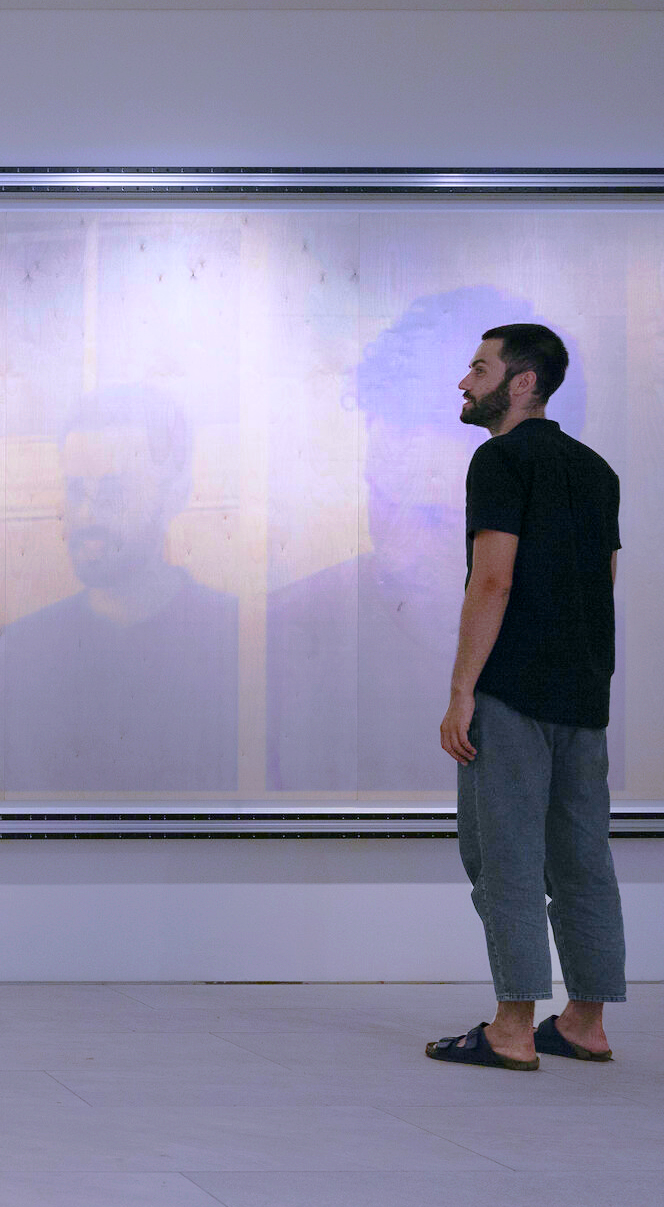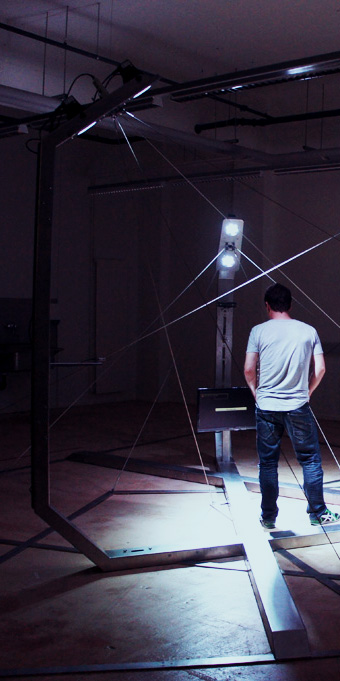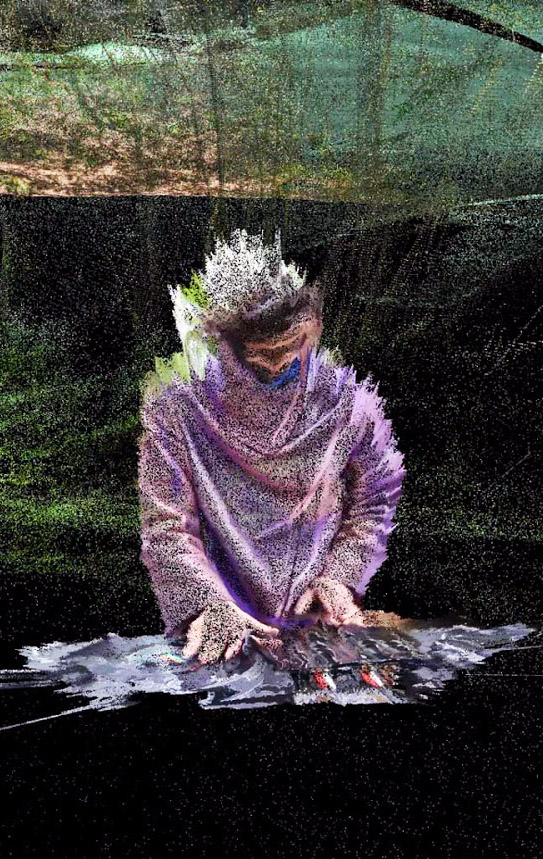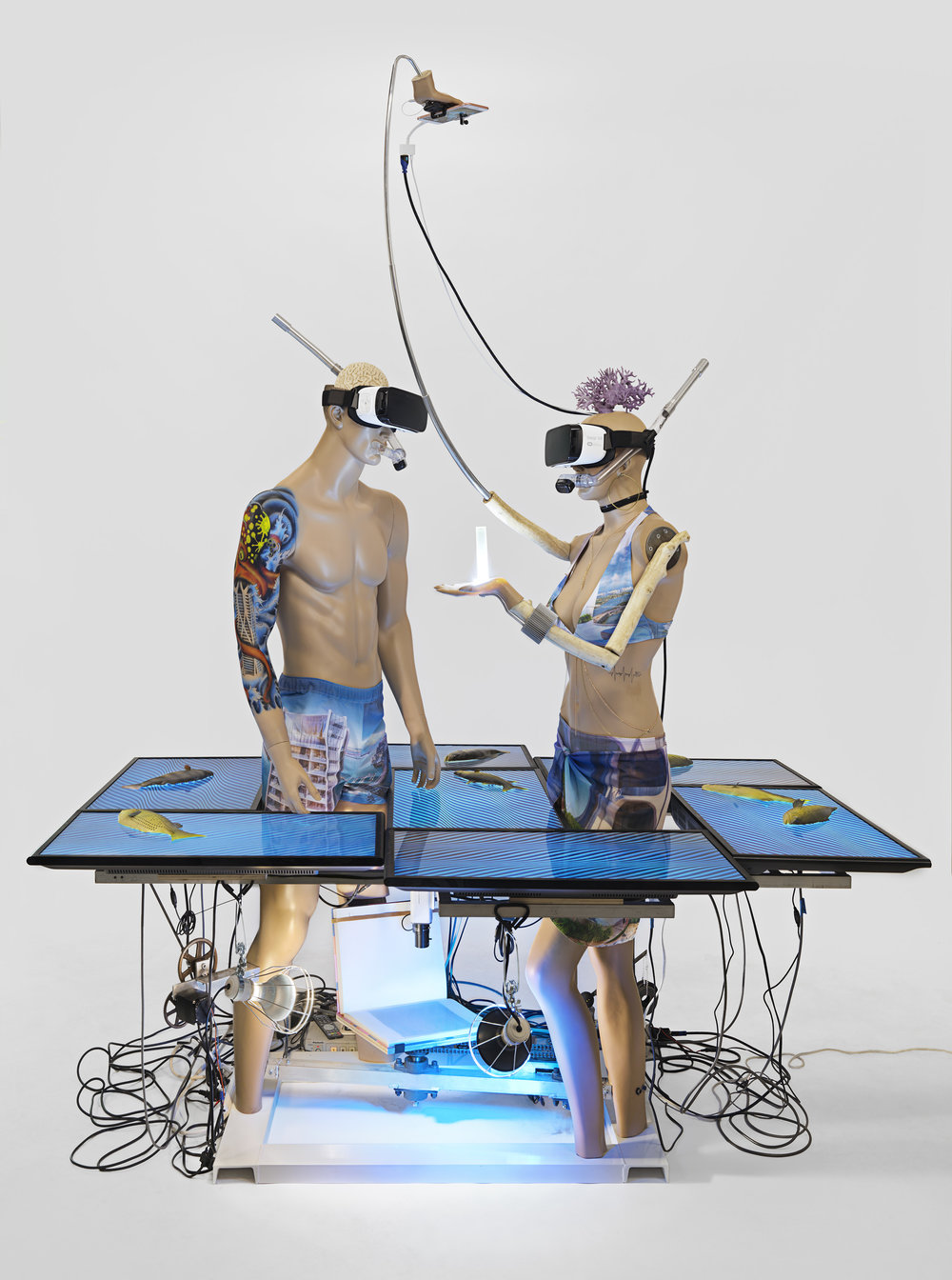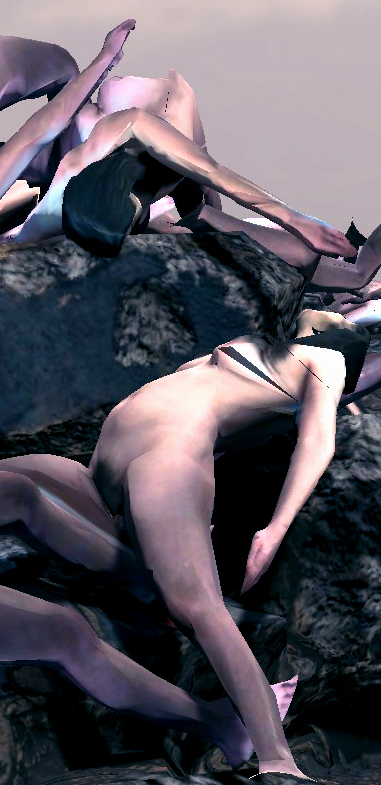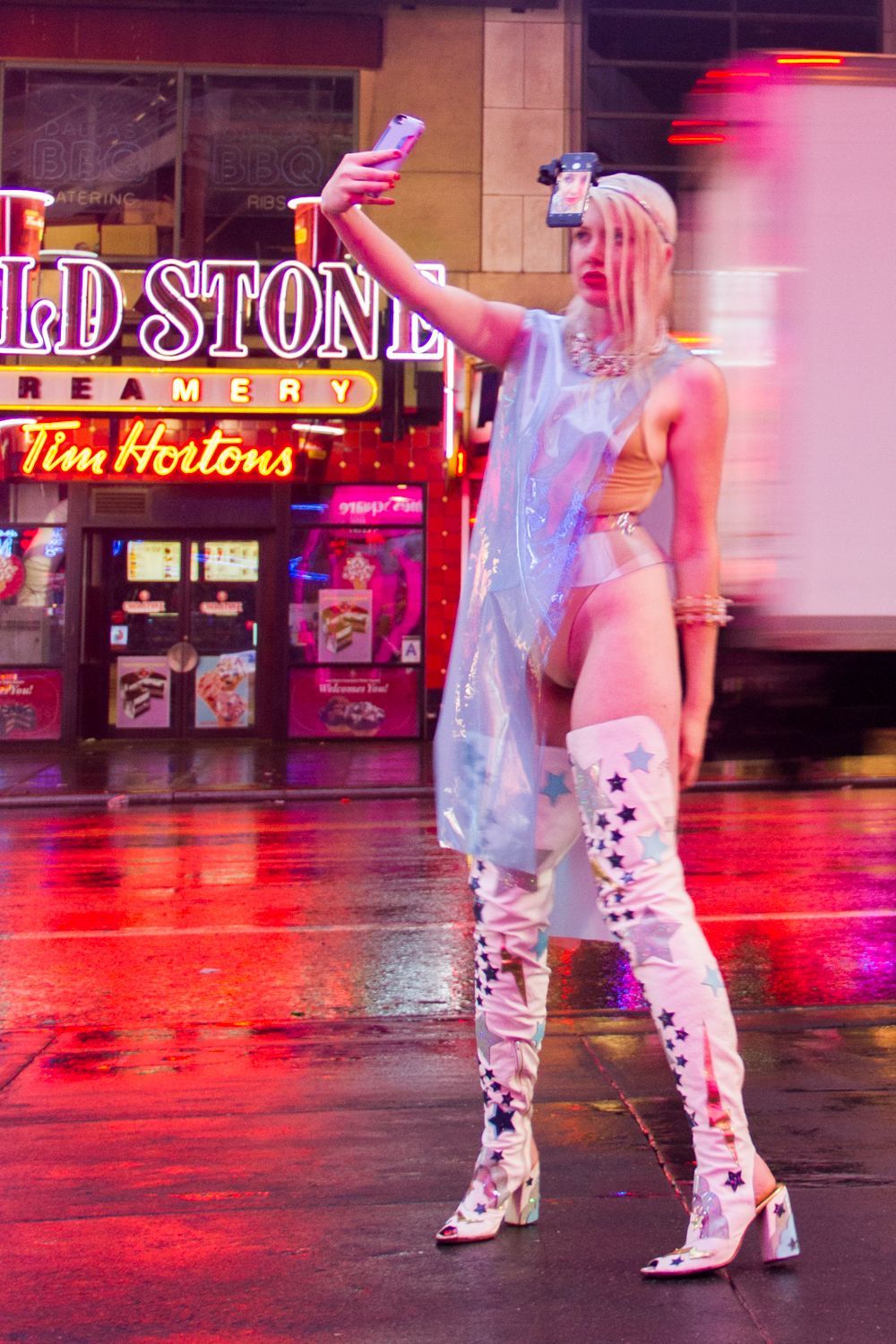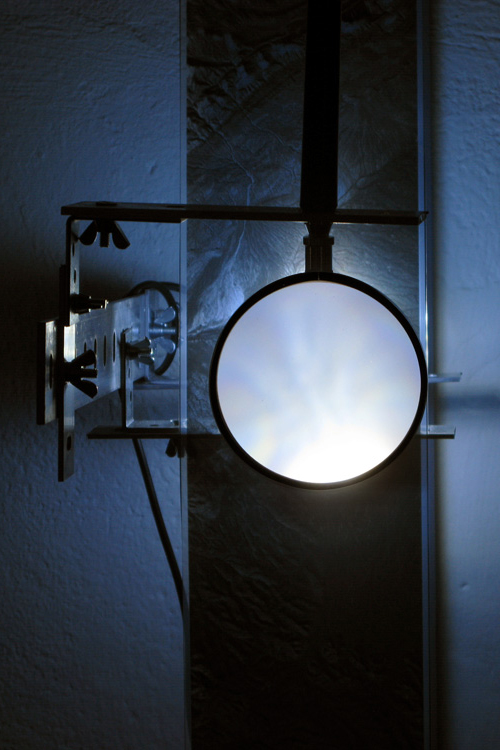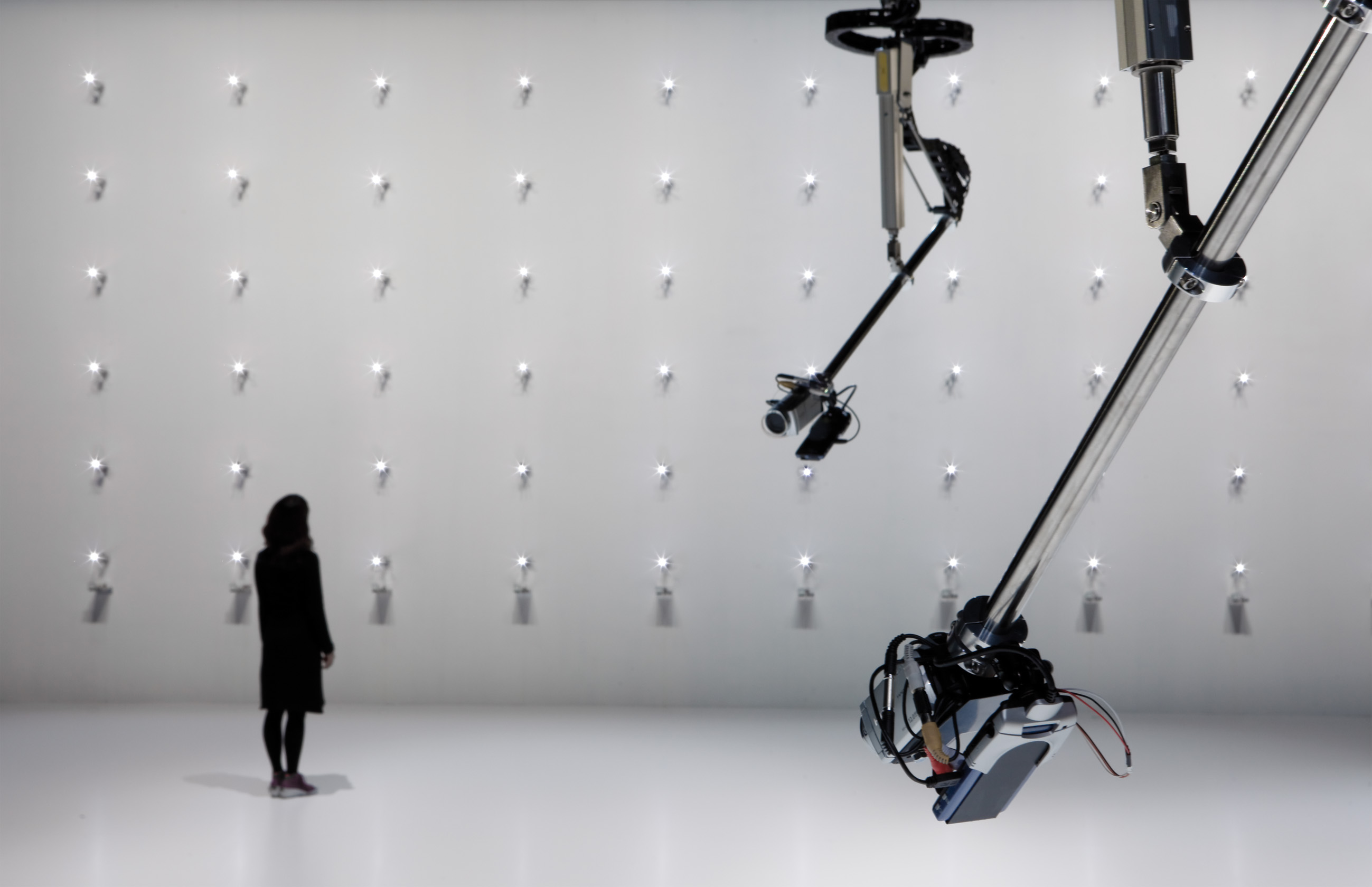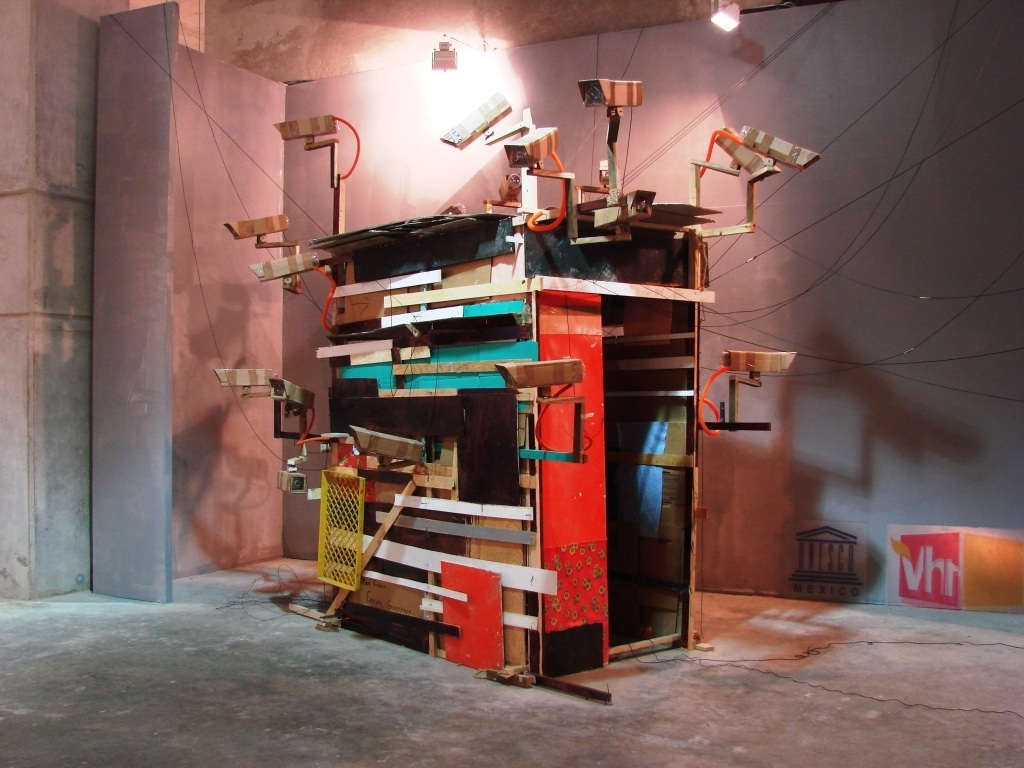
Ai Weiwei
Hansel & Gretel
Hansel & Gretel oscille entre architecture et art en explorant la perception de l’espace et le statut de l’espace public dans le contexte d’une surveillance omniprésente. Le titre fait référence au conte de fées des frères Grimm dans lequel un frère et une soeur se perdent dans la forêt – un endroit qui leur est familier. L’entrée de l’installation est une porte latérale discrète à partir de laquelle un étroit tunnel assombrissant guide le visiteur vers la vaste salle d’exercices presque complètement sombre. Des drones vrombissent au-dessus de la tête des visiteurs, suivent et transmettent leurs mouvements sur de grands écrans.


